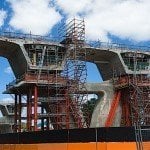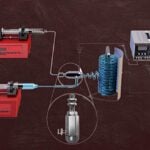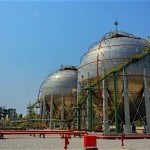A grid-connected battery system called Amphora has been certified by Ontario’s Independent Electricity System Operator (IESO). Developed by Renewable Energy Systems Canada Inc. (RES Canada), it is the first grid-connected battery on the IESO’s system. The energy storage system consists of a 2.6 megawatt-hour lithium battery with a total range of 8MW. The lithium iron phosphate battery is said to be an “inherently safe” variant of the lithium battery. It consists of two containers housing batteries weighing approximately 20 tonnes each, and a third container that converts direct current to alternating current for the grid. The service it will provide is known as frequency regulation.
The Amphora technology, which was conceived, developed and constructed by RES Canada, will be owned and operated by RES under a three-year agreement with the IESO. It has a ten-year operating lifespan, the company says.
The announcement of the RES energy storage system follows by just over a week an announcement by energy minister Bob Chiarelli that the first grid-connected commercial flywheel facility had commenced operations in Ontario. Provided by NRStor Incorporated, the 2 MW flywheel energy storage system is manufactured by Temporal Power Limited, a privately owned Canadian company. The facility where it will operate is located in Harriston, Ontario.
The contract for the flywheel facility, described as the first of its kind in Canada, was also awarded through the IESO procurement process. The IESO is seeking up to 10 MW of storage, or “regulation,” from alternative sources that include technologies such as flywheels and batteries. The president and CEO of IESO noted that these kinds of alternative technologies are “gaining momentum” in Ontario. The global market for utility-scale energy storage is expected to grow from a modest $164 million in 2014 to more than $2.5 billion by 2023, according to market research.
The IESO says that energy storage technologies can improve the overall efficiency of the electricity system by providing greater flexibility to the grid. Projects such as the Amphora battery from RES and the flywheel from NRStor allow “short term energy balancing” and fast response which are essential in a grid that increasingly relies on intermittent renewable energy resources like wind and solar.

































